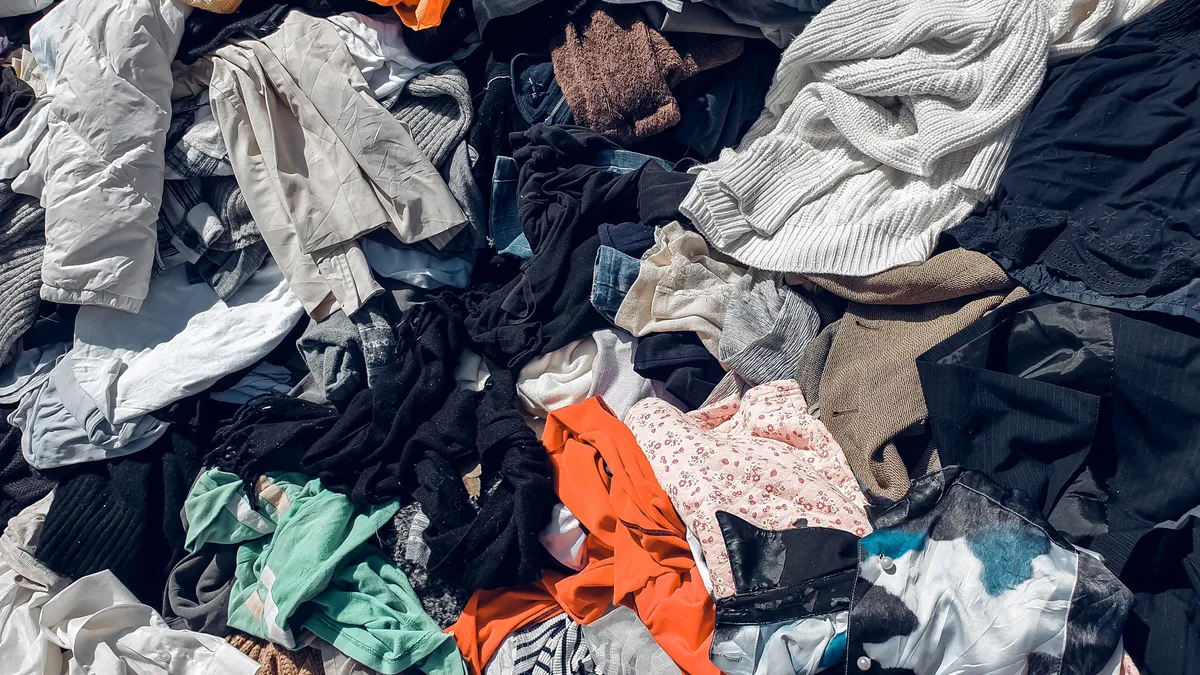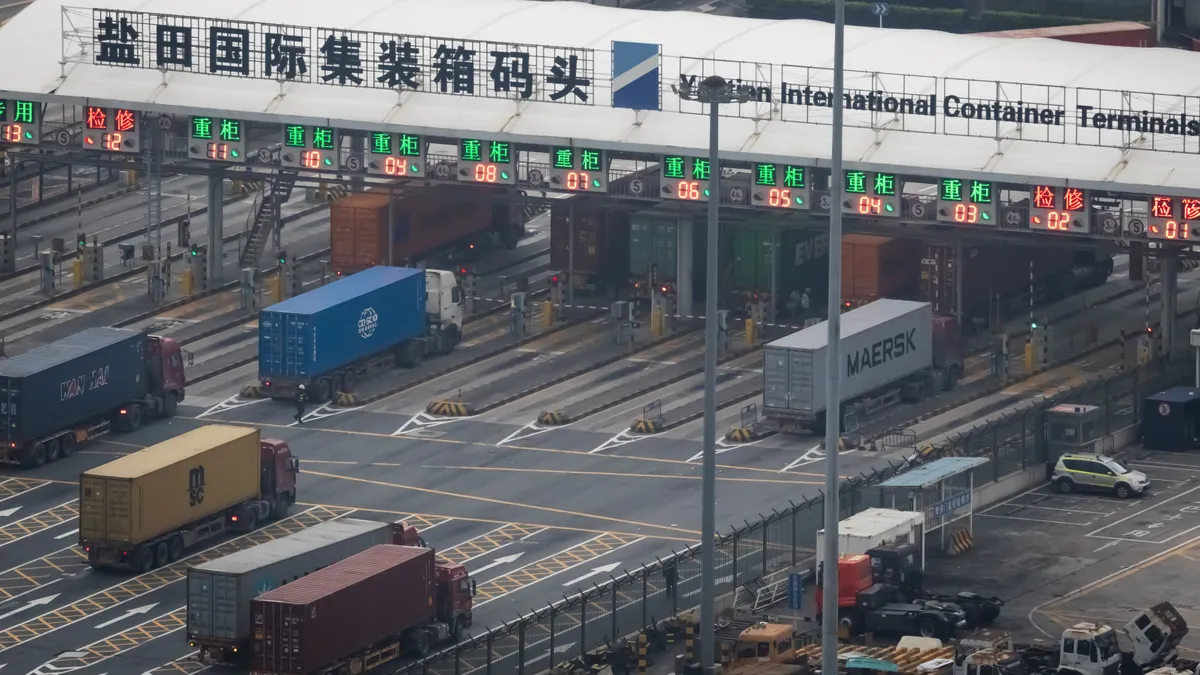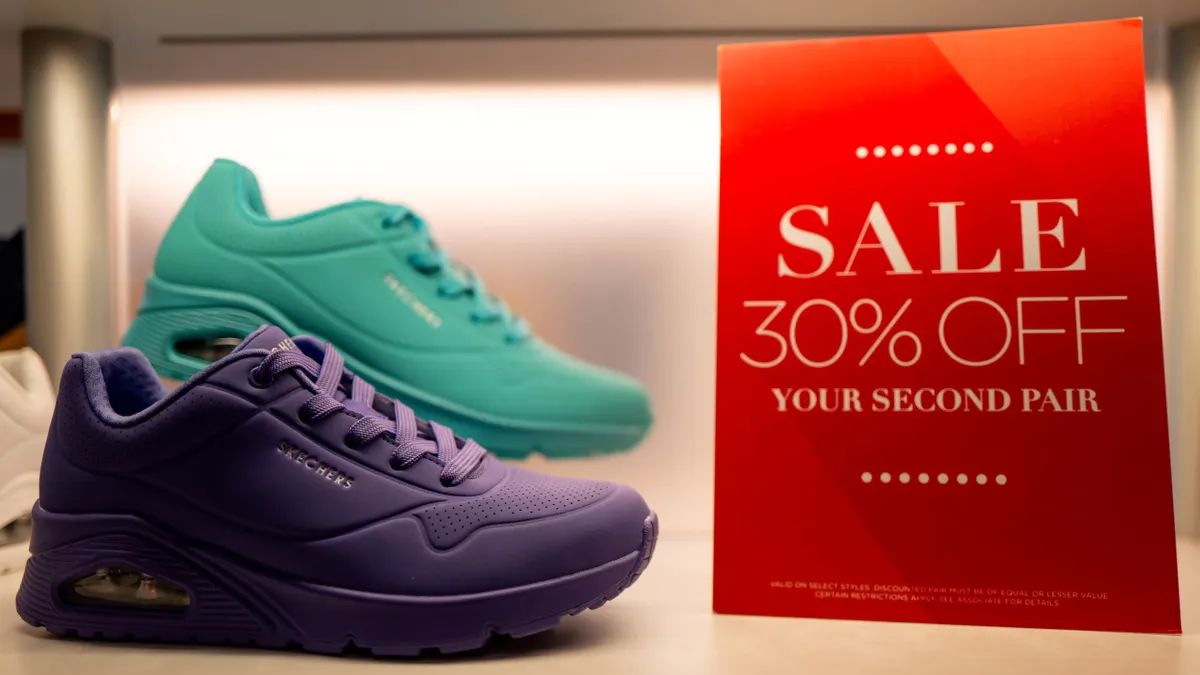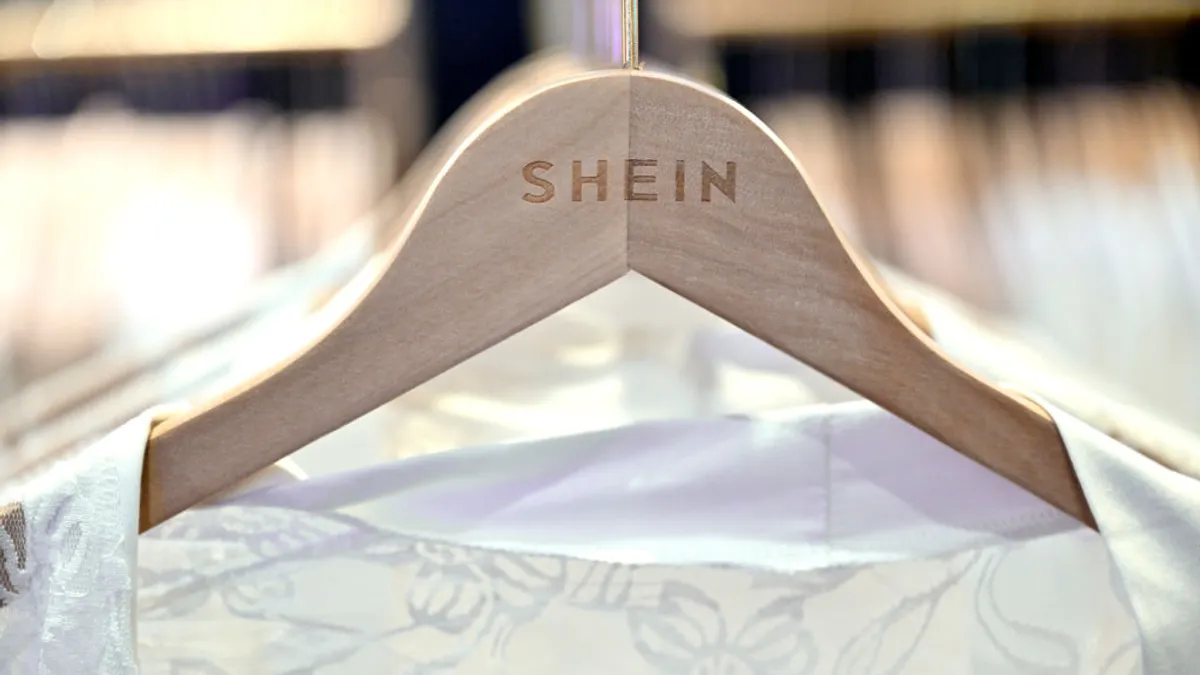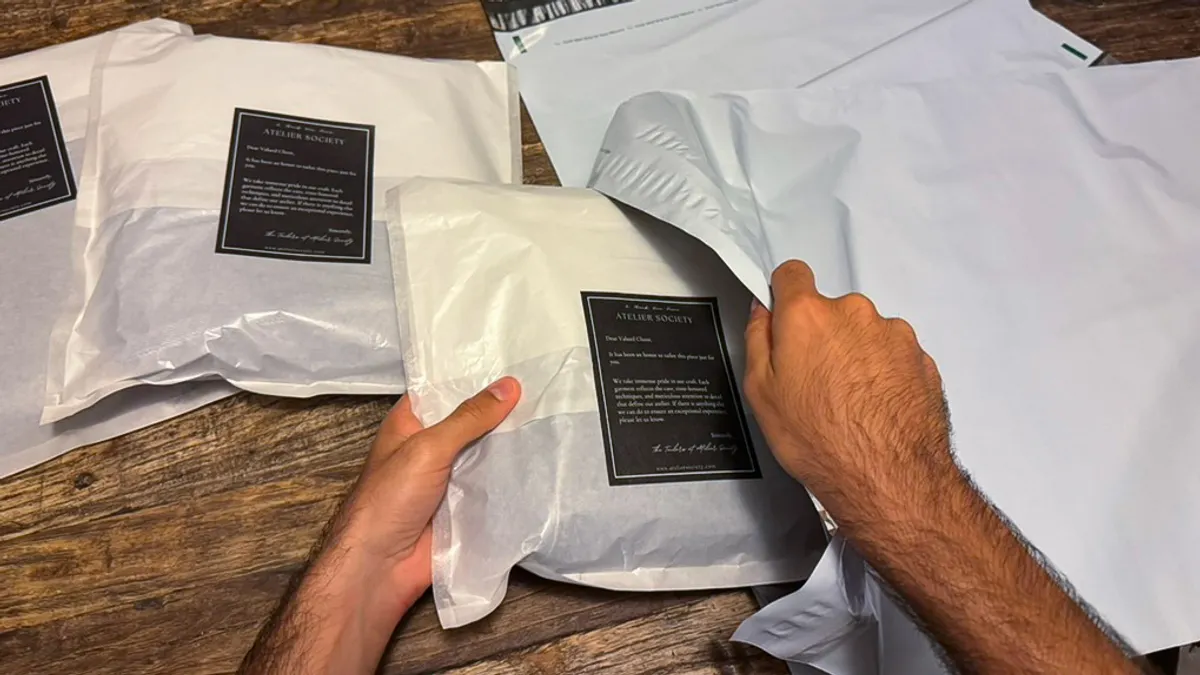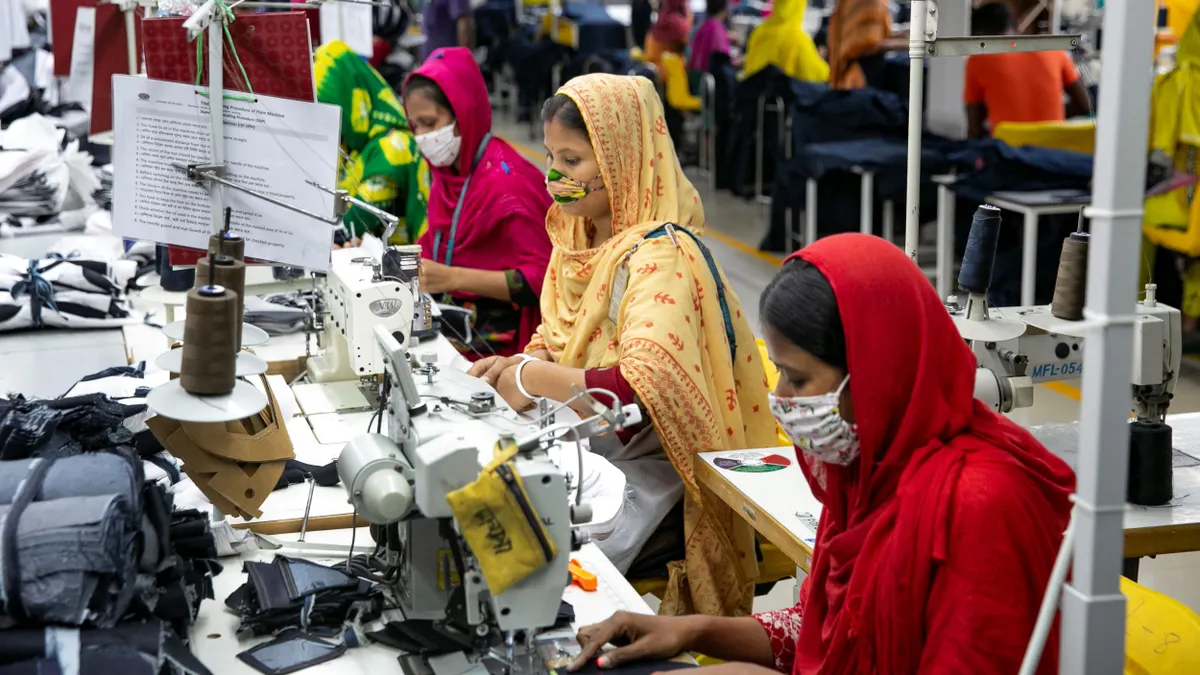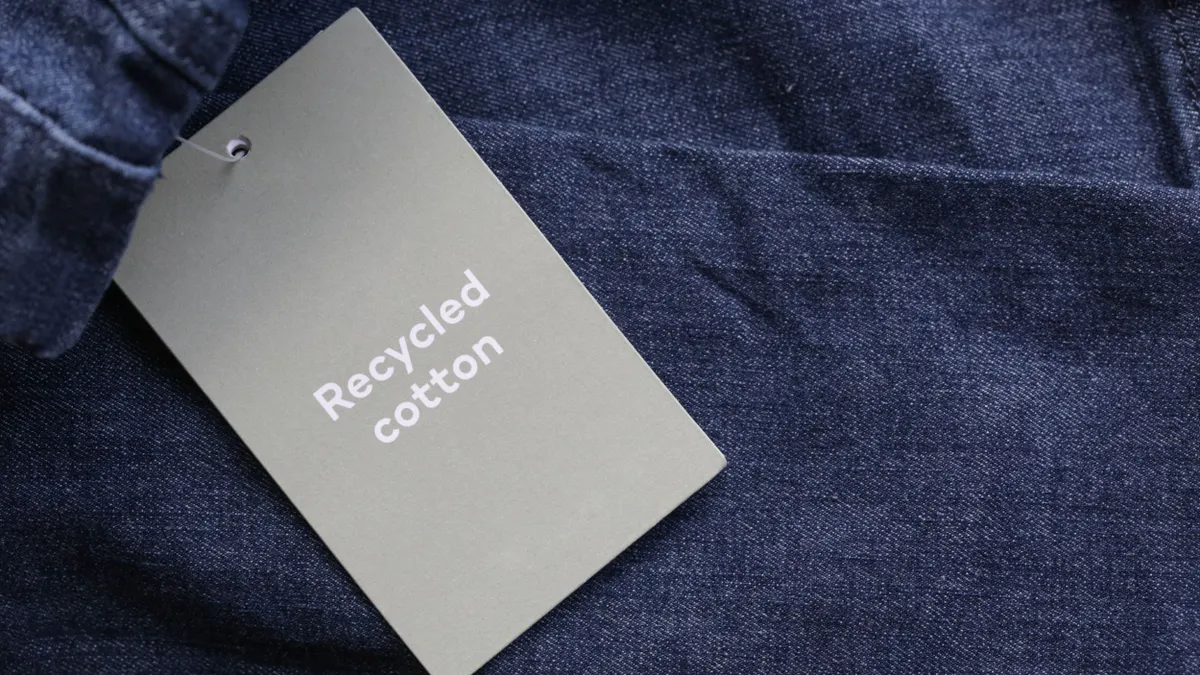Fashion supply chains are under incredible duress in 2025 due to a litany of raw material procurement, labor and logistics management challenges.
Participating fashion leaders in the BoF-McKinsey State of Fashion Executive Survey — which polled 345 individuals between August and October 2024 — are pessimistic about the year ahead. According to the survey findings, 39% of fashion executives anticipate industry conditions to get worse, while 41% expect the market to remain the same.
“Consequently, 2025 is likely to be a time of reckoning for many brands,” according to McKinsey's State of Fashion 2025 report. “The upshot is that there is still opportunity to be found for brands that move nimbly and are quick to adapt to upheavals in a chaotic marketplace.”
Here are three trends fashion supply chains will need to navigate this year.
Navigating potential tariffs
President Donald Trump’s second term presents risks to fashion supply chains, with tariffs a leading concern, said Sheng Lu, a professor and director of graduate studies at the University of Delaware’s department of fashion and apparel studies.
Trump signed executive orders implementing tariffs on imports from Canada, Mexico and China over the weekend. Although those on Mexico and Canada have been delayed until March, the duties on China-made goods went into effect Tuesday, with the country unveiling its own tariffs in response.
According to Lu, tariffs could raise sourcing costs and prompt inflationary pressure, ultimately impacting consumer purchasing power and the overall U.S. economy.
Lu said that the Consumer Price Index is already high, and continuing to hike tariffs on China-made goods and apparel would only be "adding fuel to the fire."
However, fashion firms have been preparing for Trump’s tariffs. While discount retailers such as TJX believe tariffs will provide opportunities, many other companies have devised plans to mitigate the impact of higher duties.
In November, Steve Madden told analysts it aims to slash its imports from China by up to 45%. Similarly, sporting goods retailer Academy Sports and Outdoors has reduced the percentage of goods it sources from China to best position itself for the next four years.
Despite diversifying sourcing practices, procurement and production networks are expected to continue leaning on Asia, said Lu.
Per McKinsey’s outlook, “fashion brands are likely to double down on diversifying their sourcing footprint in Asia and lay the foundations for nearshoring.” Compared to a 2019 baseline, U.S apparel and textile imports from China were down six percentage points in 2023. Meanwhile, in the last five years, the share of investments in nearshoring apparel manufacturing increased 20 percentage points for the U.S.
Stakeholders are interested in expanding sourcing in the U.S. and in the Western Hemisphere, especially with Free Trade Agreement partners, the United States Fashion Industry Association told Fashion Dive’s sister publication Supply Chain Dive. However, most brands are going to “wait-and-see” based on the implementation of tariffs.
De minimis exemption changes
Possible alterations to the de minimis threshold — which is critical to cross-border e-commerce supply chains — will also impact global fashion brands. Some have already been instituted, with Trump’s executive orders implementing tariffs this week including a provision ending de minimis eligibility for “most products of China,” per a U.S. Customs and Border Protection notice.
The threshold enables companies to avoid duties and taxes for imports less than $800. Ultra-fast fashion e-commerce marketplaces like Temu and Shein have benefited from the exemption.
But with U.S. lawmakers looking to crack down on China-based imports, the recent change (and potential future alterations) to de minimis could send ripple effects down the supply chain, leading to higher prices and longer shipping times.
When removed, the price of some Shein and Temu products could rise by up to 20%, according to McKinsey.
“With Trump’s new tariffs looming, some argue that closing the de minimis ‘loophole’ has become even more urgent, as it creates more financial incentives to use the rule to bypass the tariff increase,” Lu said prior to the executive orders.
Improving labor transparency
Labor woes remain a persistent challenge for fashion supply chains, according to industry leaders.
The prevalence of exploitive labor conditions is one of the most complex and obscure issues plaguing the supply chain. As of 2021, roughly 50 million people are living in modern slavery, according to global data from human rights advocacy group Walk Free. Over 29 million people in Asia and the Pacific region are subject to modern slavery, per Walk Free, accounting for a larger total than all other regions for which the group has data combined.
In 2024, a Skechers supplier was accused of using forced labor from the Xinjiang Uyghur Autonomous Region and was added to the Department of Homeland Security’s list of companies suspected of modern slavery. Shein, meanwhile, has consistently been scrutinized and probed about the potential use of forced labor in its cotton sourcing practices.
Forced labor is just one “example in a trend that we expect will continue when it comes to supply chain transparency and a broadening expectation that companies engaging in global trade understand who and what is in their supply chains,” said the Retail Industry Leaders Association in an email.
RILA further noted that the Uyghur Forced Labor Prevention Act, or UFLPA, has continued to urge greater scrutiny and visibility over the use of forced labor in global supply chains. The association stated that it anticipates the “robust enforcement of the UFLPA and US forced labor laws to continue” in 2025.
A tight U.S. labor market also poses risks for fashion supply chains, impacting frontline labor availability in warehouses and distribution centers, RILA added.
This story was first published in Supply Chain Dive’s Procurement Weekly newsletter. Sign up here.



